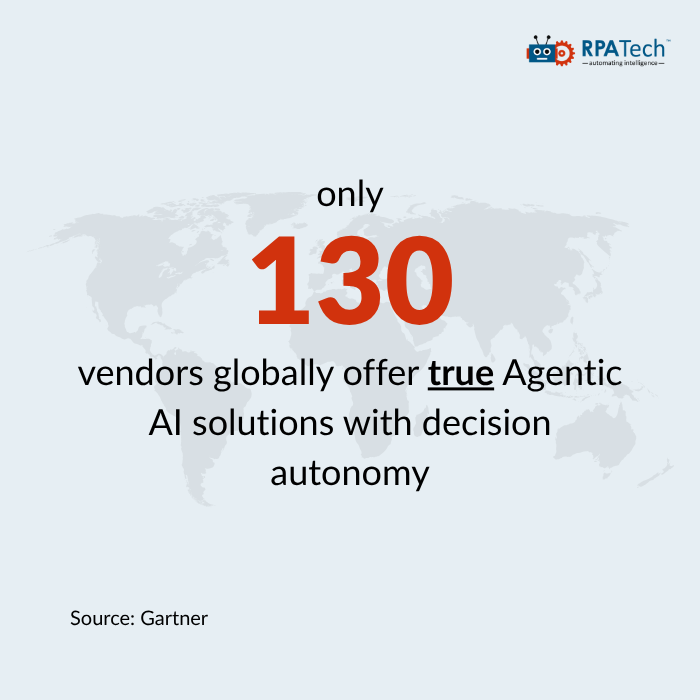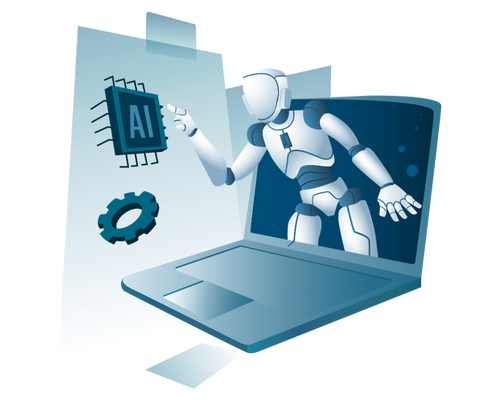Agentic AI has emerged as one of the most promising and misunderstood trends in enterprise technology. Designed to take autonomous decisions, adapt to changing conditions, and work independently, agentic AI systems are meant to go beyond chatbots and workflow automation.
Yet, reality is catching up fast.
According to Gartner’s 2025 prediction, over 40% of agentic AI projects will be cancelled by 2027. Why? Because of escalating costs, unclear business value, and inadequate risk controls.
But it doesn’t have to be that way. The problem is not the technology – it’s the implementation. In this blog, we break down what is going wrong, and how your organization can get your investment in agentic AI right.
What Agentic AI Should Be — And What It’s Not
Agentic AI refers to intelligent systems that go beyond assistance in automating manual tasks. These agents take initiative, adapt autonomously, and make context-driven decisions in complex business scenarios.
Unfortunately, most current solutions do not live up to that promise.
The Reality? Agentic AI Is Being Misrepresented
The market is cluttered with tools that claim to be agentic AI but are not. Here is the breakdown according to the findings from Gartner:
- Only 130 vendors globally offer true agentic AI solutions with decision autonomy.
- Most others are rebranded RPA bots, chatbots, or basic workflow tools – a phenomenon now being called “agent-washing“.
- Many deployments are just Proof of Concepts and Pilot Experiments with no roadmap to scale or ROI.

The Investment Mood: Cautiously Optimistic
Gartner’s January 2025 poll of 3,412 enterprise decision-makers who attended Gartner webinars revealed:
- 19% have made significant investments
- 42% are investing conservatively
- 31% are in wait-and-watch mode
- 8% have not invested at all
This shows that while interest is strong, clarity on use cases and impact is still missing.
Why Most Agentic AI Projects Fail
Legacy System Complexity
Most enterprises run outdated infrastructure. Integrating agentic AI into these environments is costly and fragile.
Misaligned Use Cases
Many businesses label simple automation or decision rules as “agentic AI”, leading to underwhelming results.
Lack of True Autonomy
Today’s tools often lack the capability to operate in unstructured, evolving environments, limiting real-world impact.
All is not so gloomy. The Future of Agentic AI is Bright
Despite short-term failures, the long-term outlook is promising. Gartner forecasts by 2028:
- 15% of daily work decisions will be made autonomously by agentic AI (vs. 0% in 2024)
- 33% of enterprise applications will embed agentic AI (up from <1%)
This is the beginning of a new productivity paradigm, where systems do not just assist, but lead.
How to Succeed with Agentic AI: Key Recommendations
1. Start with Clear ROI
Prioritize use cases where autonomous decision-making delivers measurable value — customer service routing, logistics rerouting, proactive risk alerts, etc.
2. Use the Right Tech for the Right Task
- Agents for adaptive, decision-based scenarios
- Automation for predictable workflows
- Assistants for support and information retrieval
3. Rethink Workflows Entirely
Don’t just drop agents into legacy processes. Redesign workflows where agents can thrive i.e. cross-functional, fast-paced, context-heavy operations.
4. Think Beyond Task Automation
Focus on end-to-end value creation – whether it’s better customer experience, faster decision cycles, or scaling operations without scaling cost.
Ready to Build Real Agentic AI?
At RPATech, we help enterprises move beyond the buzzwords to build truly agentic systems that act, decide, and learn.
Whether you are exploring your first use case or scaling your agentic AI ecosystem, we bring:
- Domain-specific agentic architectures
- Plug-and-play integration with existing systems
- End-to-end consulting from use case discovery to deployment
- Outcome-driven delivery models that ensure ROI
Let’s talk. Book a discovery call to see how agentic AI can drive real business impact—just fill out the form below.




